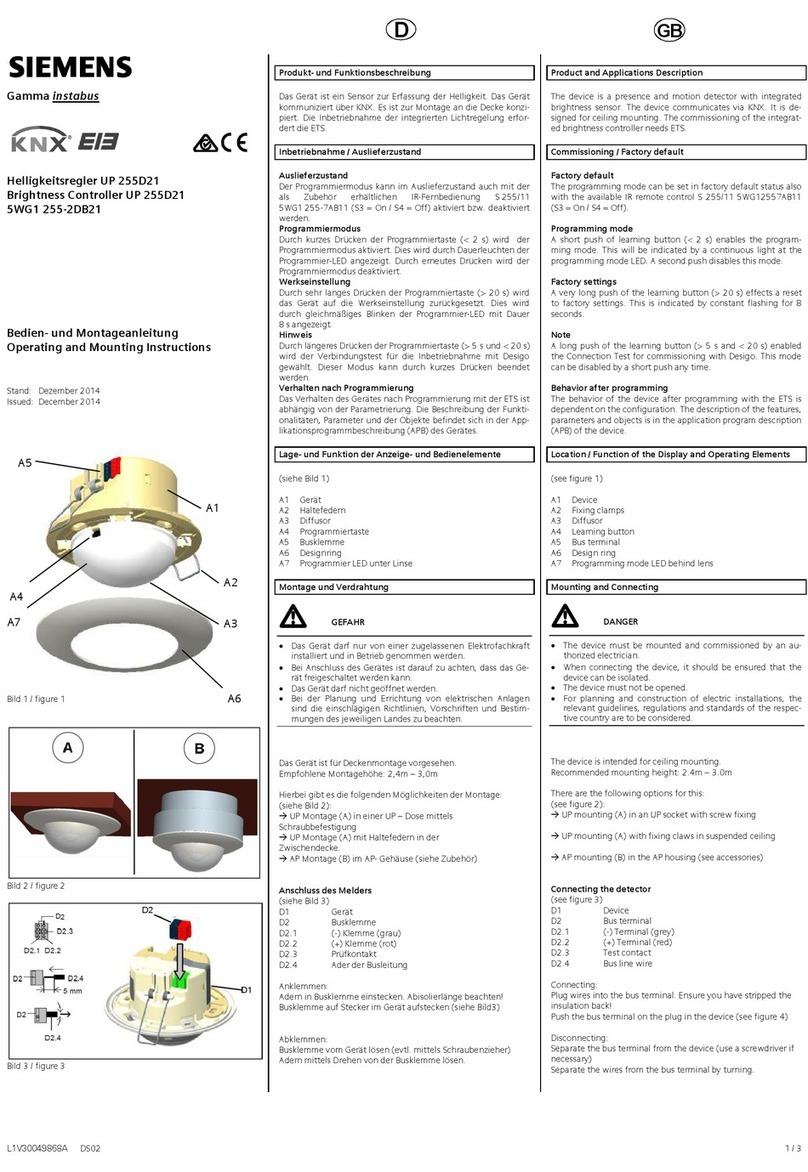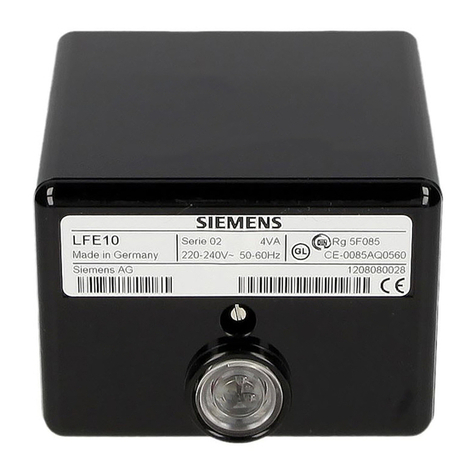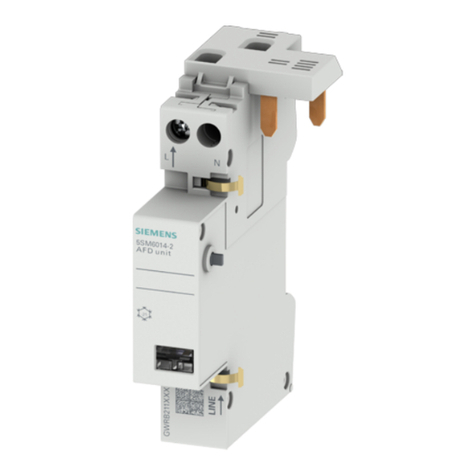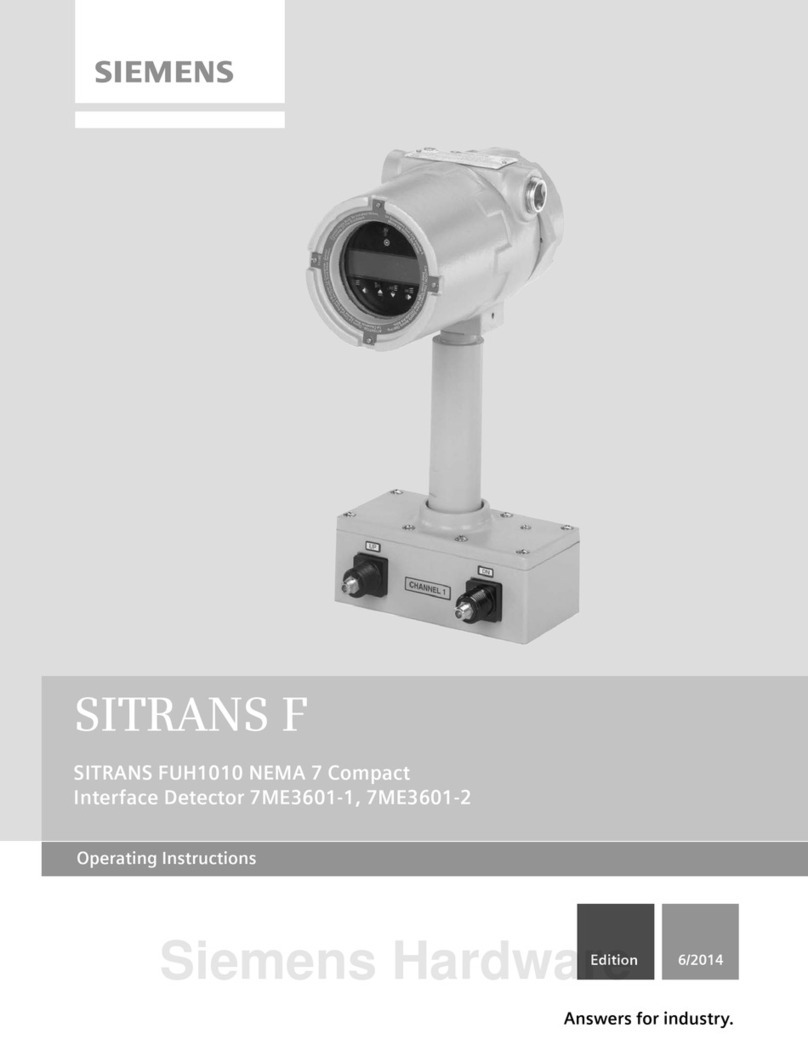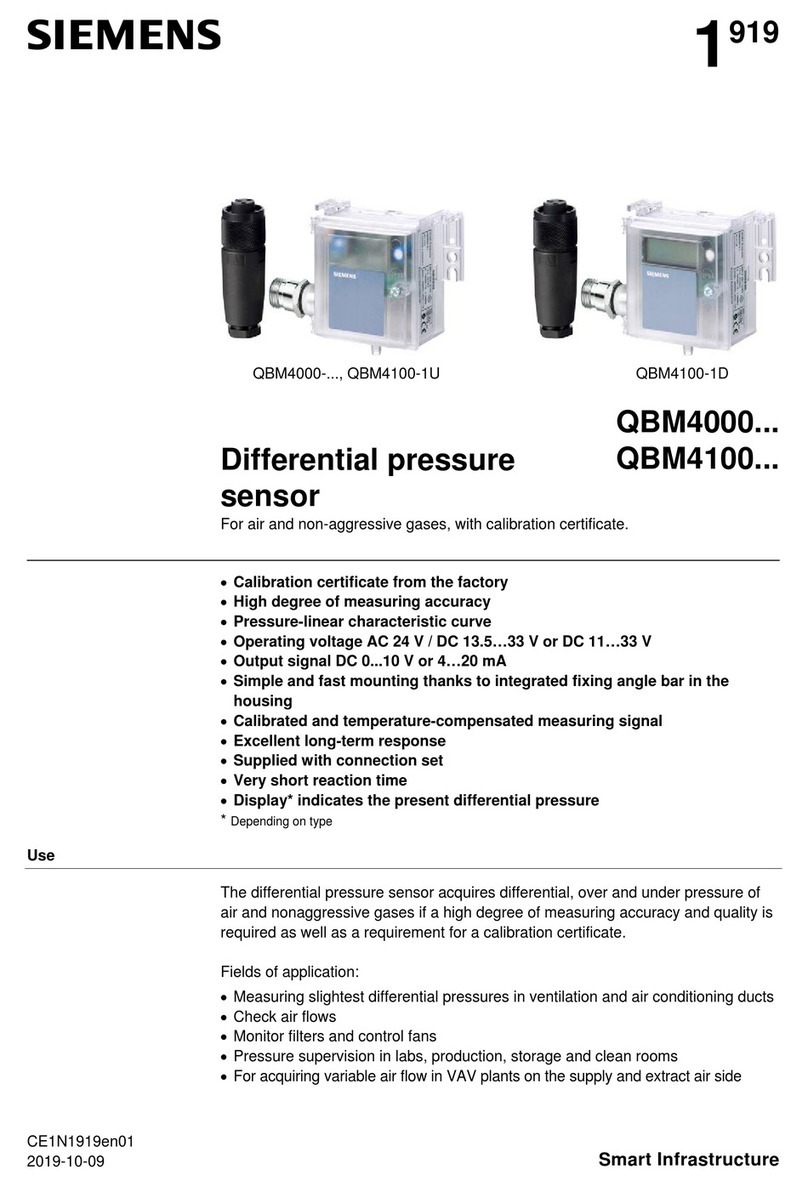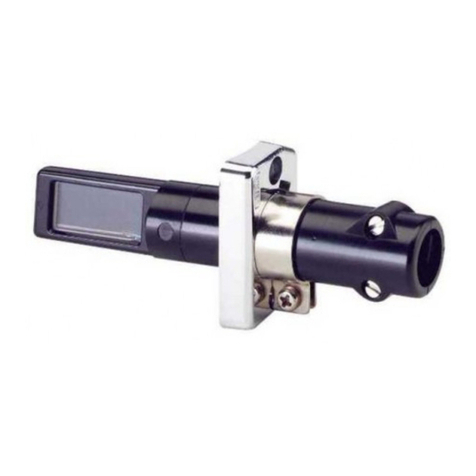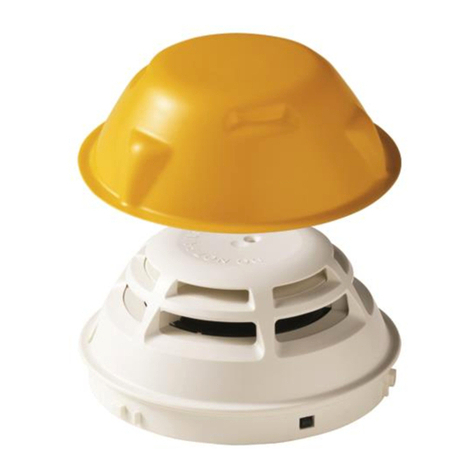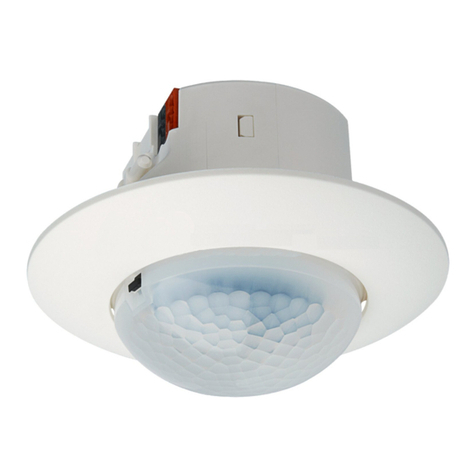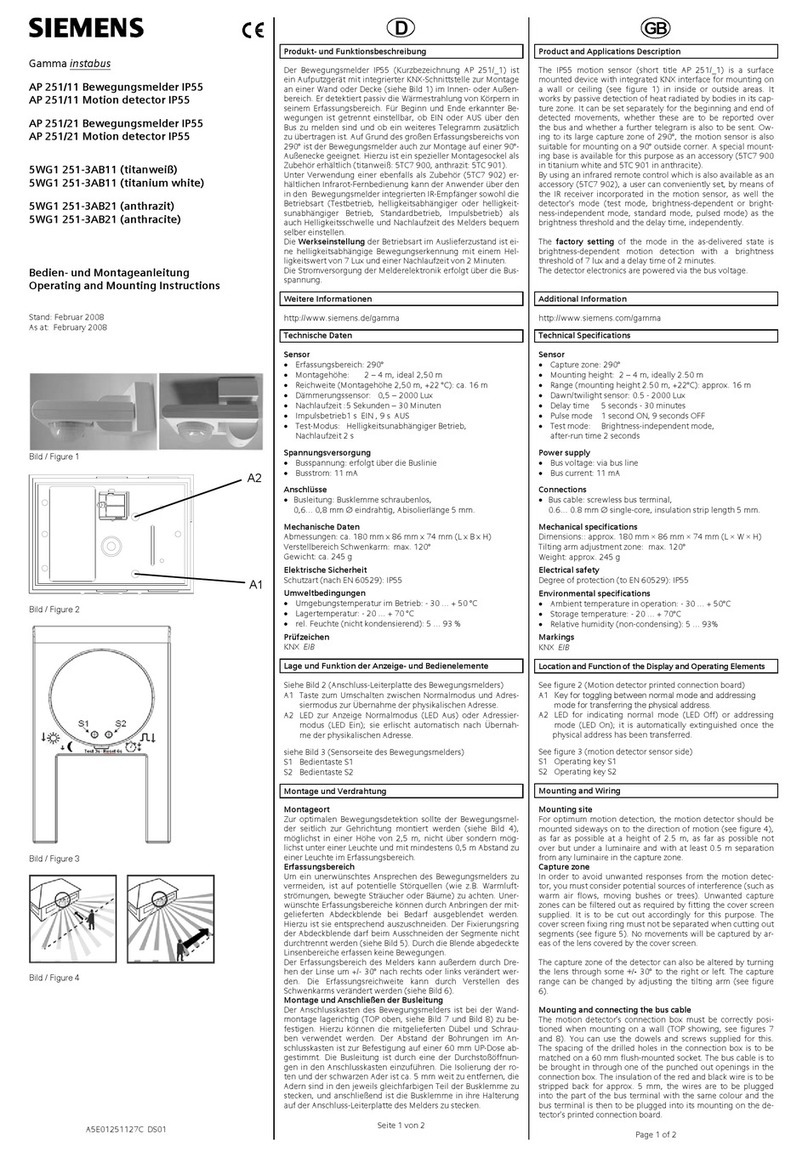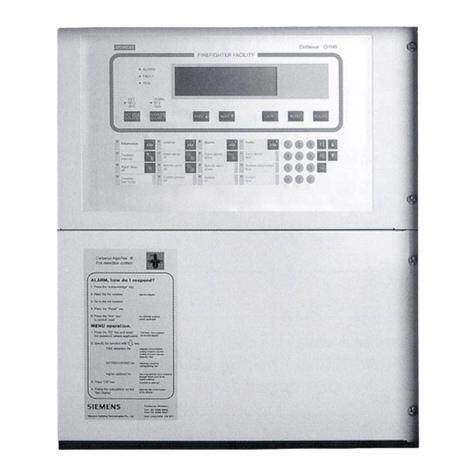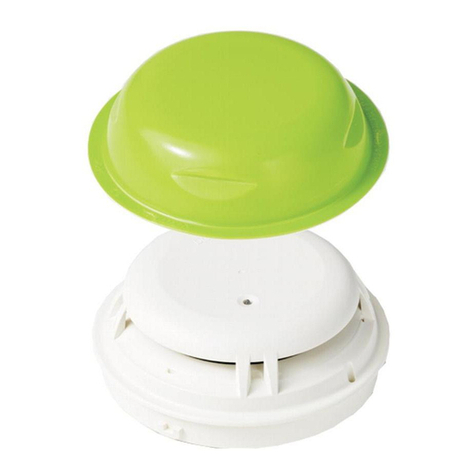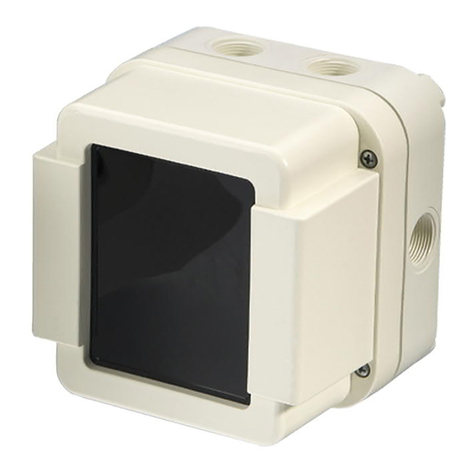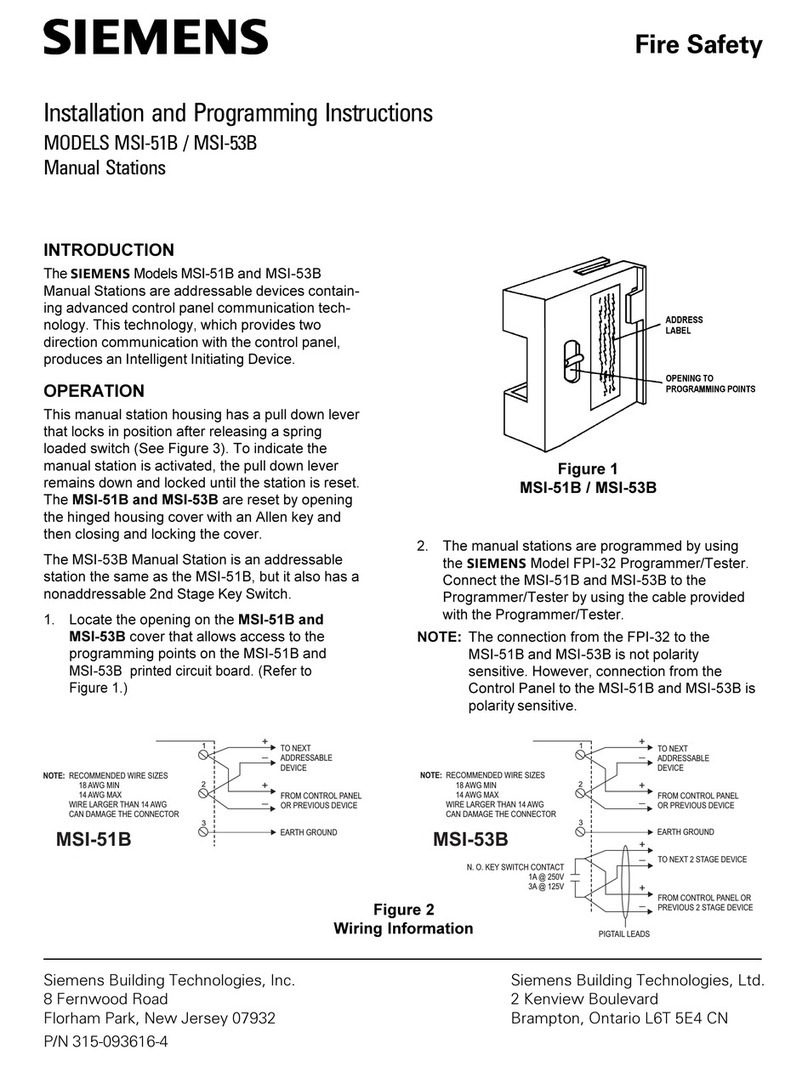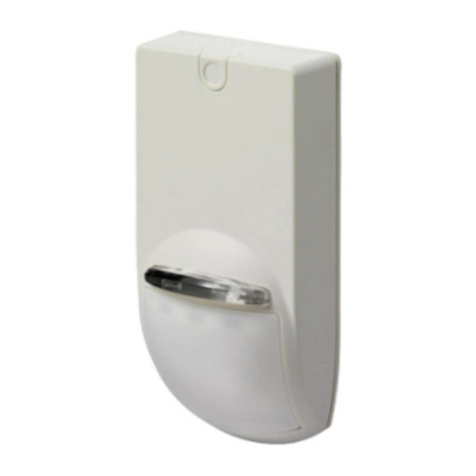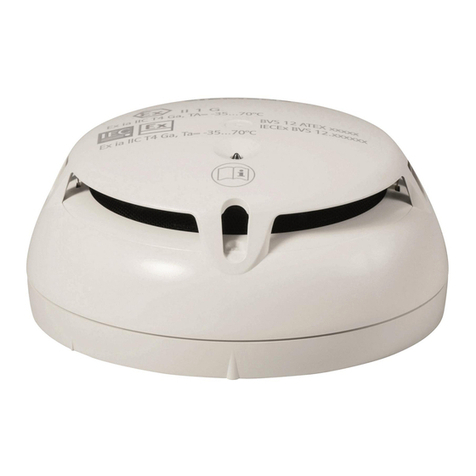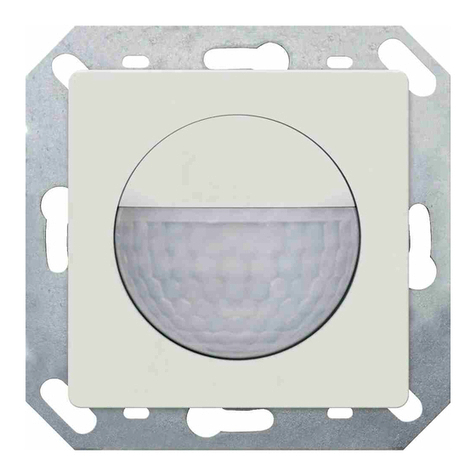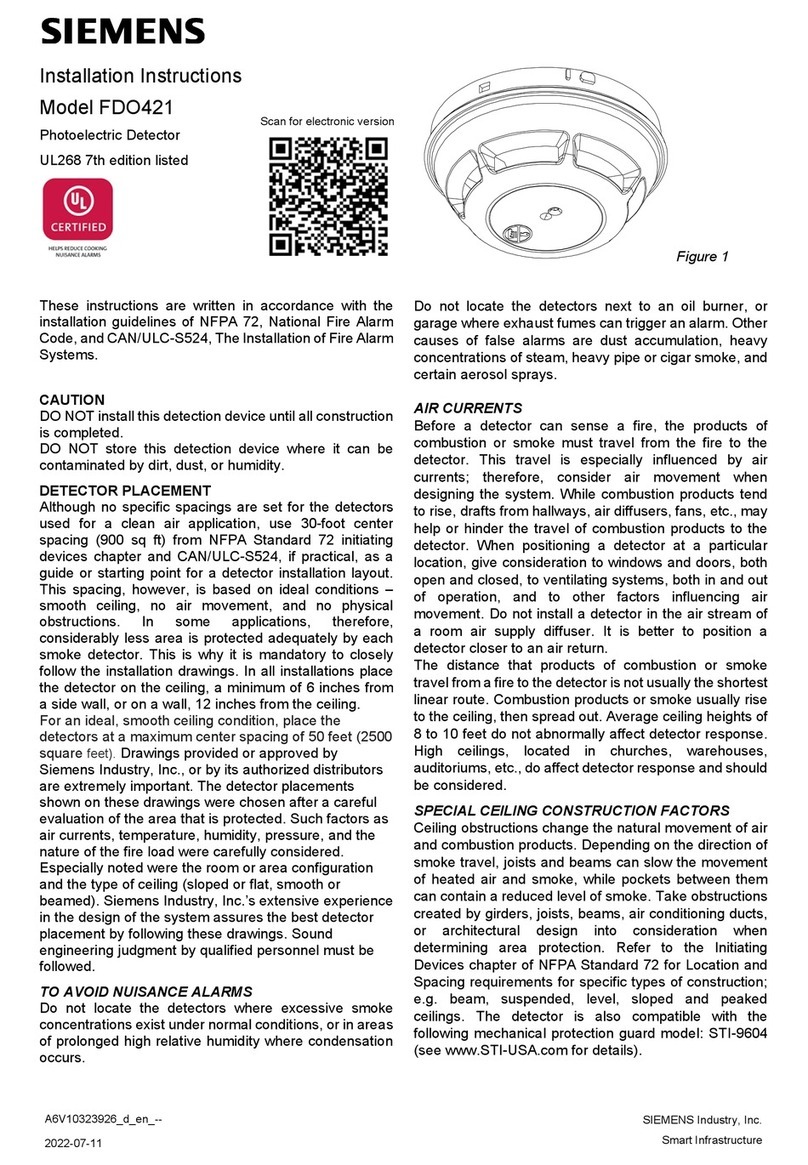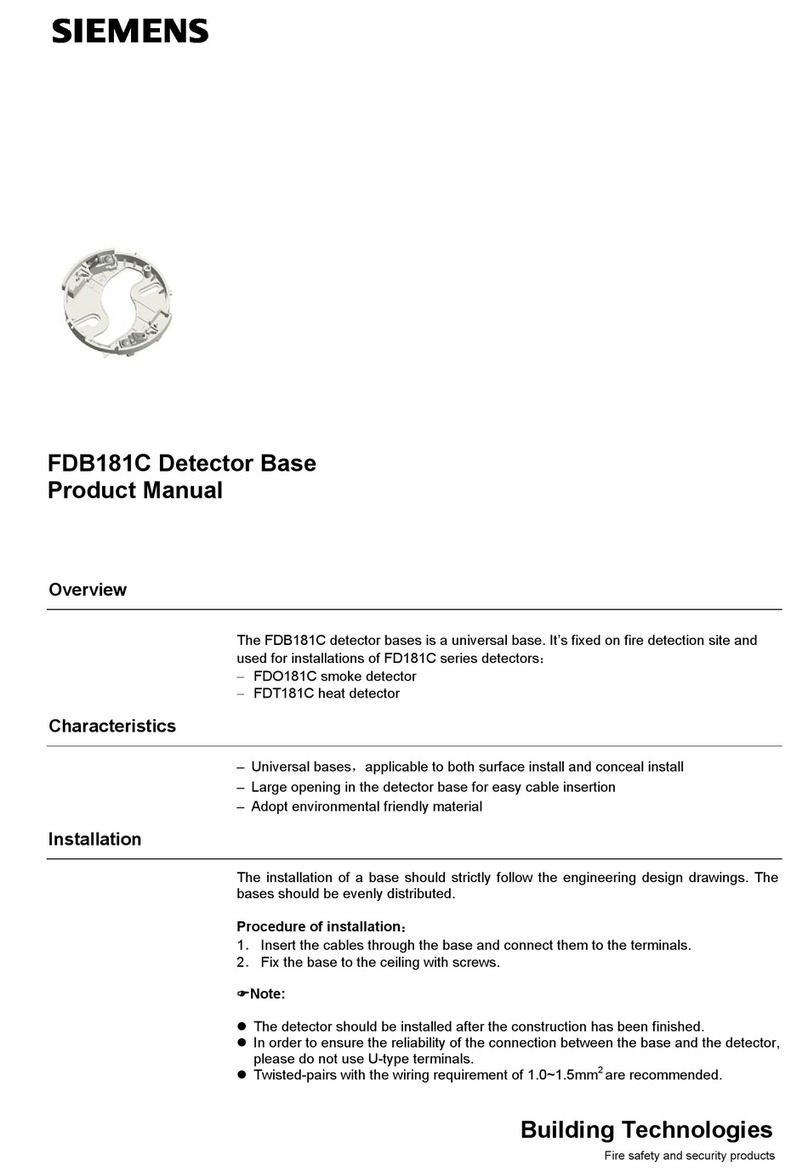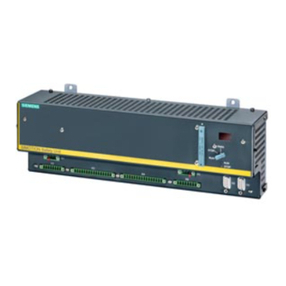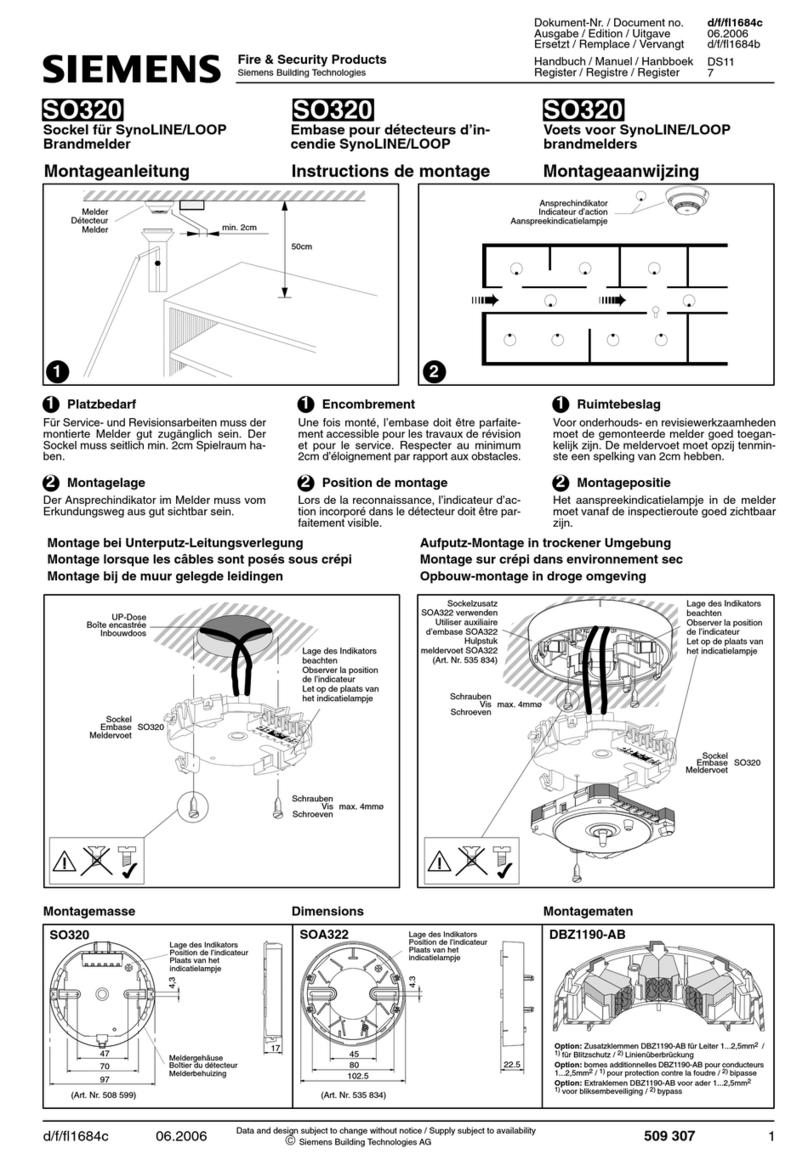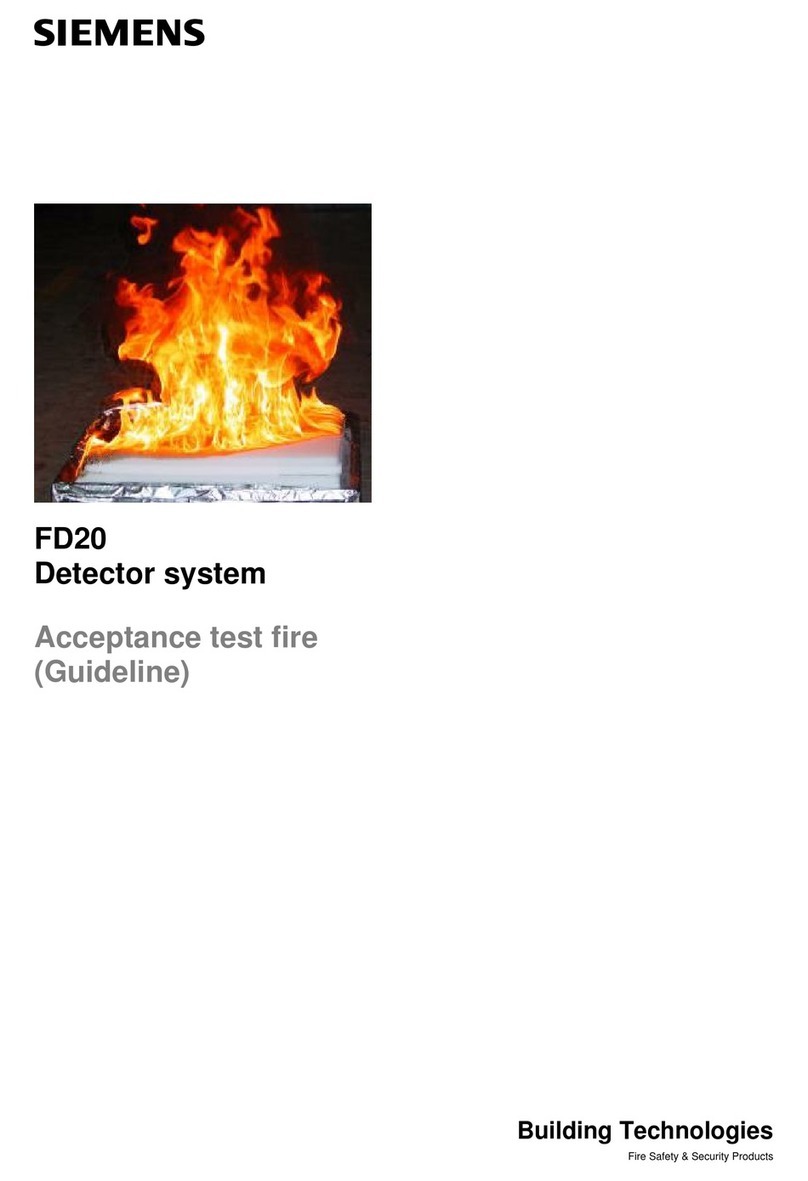
2/11
Building Technologies CC1N7719en
HVAC Products 02.06.2008
Warning notes
To avoid injury to persons, damage to property or the environment, the following
warning notes must be observed!
Do not open, interfere with or modify the flame detector!
•All activities (mounting, installation and service work etc.) must be performed by
qualified staff
•Before making any wiring changes in the connection area, completely isolate the
plant from mains supply (all-polar disconnection). Ensure that the plant cannot be
inadvertently switched on again and that it is indeed dead. If not observed, there is
a risk of electric shock hazard
•Ensure protection against electric shock hazard by providing adequate protection
for the burner control’s connection terminals
•Each time work has been carried out (mounting, installation, service work, etc.),
check to ensure that wiring is in an orderly state and that the correct terminals of
the LMV5... are used and make the safety checks as described in «Commissioning
notes»
•Make certain that none of the 3 connecting wires of the QRI... is connected to ter-
minal X10-02/3 (mains voltage L)! Risk of damage to QRI... and LMV5...!
•Use an AC voltmeter (Ri = 10 MΩ) to ensure that there is no voltage across the
reference line (blue wire = Nof the LMV5...) and the burner housing (PE)
•Due to its mounting location behind the baffle plate, the flame detector has high
signal sensitivity and, therefore, identifies small variations in infrared radiation as a
flame. For this reason, make certain that so-called heat streaks after loss of flame
(emitted for example by after-glowing combustion chamber lining) will not reach the
detector as these would simulate a flame. Air turbulence or similar may modulate
infrared radiation emitted by hot boiler or burner components in a way that a flame
will be simulated. Likewise, moving parts in the detector’s viewing range can cause
infrared radiation from the boiler (or a viewing tube) to be modulated, thereby pos-
sibly generating sporadic detector signals. Strong burner or detector vibrations can
also produce variations in radiation. For this reason, the burner or boiler manufac-
turer must make certain that such modulated radiation cannot reach the flame de-
tector. For example, loose cables (moving up and down in the fan’s airstream) are
not permitted within the detector’s viewing range
•Consider carefully the use of infrared flame supervision if several burners use the
same combustion chamber. In general, this type of flame supervision is not suited
for the specific supervision of individual burners
•Check to ensure that the burner will initiate lockout when – while the burner is run-
ning – the flame detector is removed from its fixing on the burner and – without
moving it – is exposed to room lighting
•Fall or shock can adversely affect the safety functions. Such units must not be put
into operation even if they do not exhibit any damage
Mounting notes
•Ensure that the relevant national safety regulations are complied with
•Secure the flame detector to the burner with the clamp and flange provided. With
the clamp’s fixing screw loosened, the detector can be correctly adjusted toward
the flame. This adjustment can be checked by watching the intensity of the flame
signal on the AZL5... display and operating unit of the LMV5... burner control, or
with the help of the measuring circuit (refer to «Detector signal measurement»)
•Ensure that the connection between the metal surface of the flange and the
burner’s earthed housing is electrically conductive
